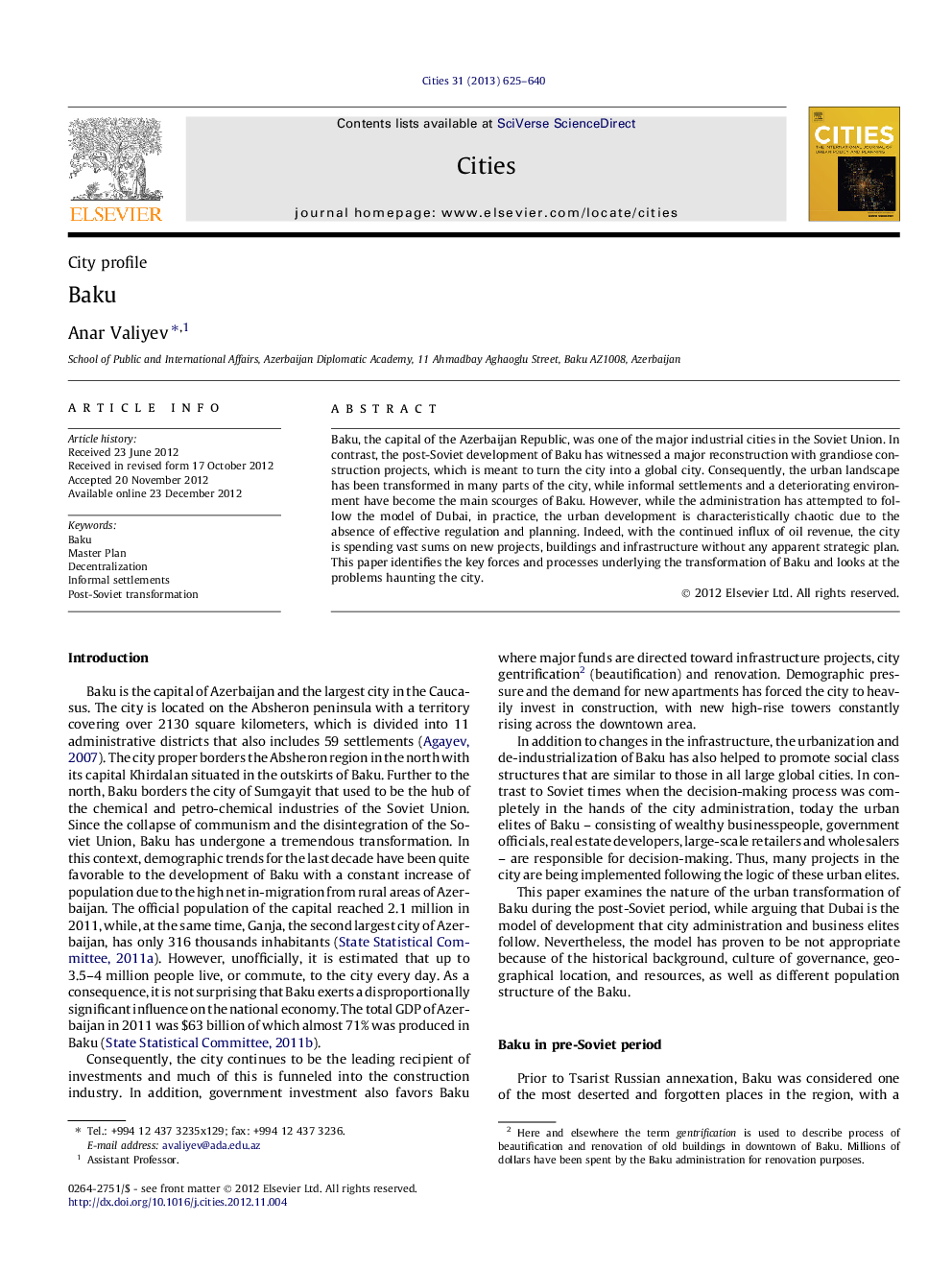| Article ID | Journal | Published Year | Pages | File Type |
|---|---|---|---|---|
| 1008555 | Cities | 2013 | 16 Pages |
Baku, the capital of the Azerbaijan Republic, was one of the major industrial cities in the Soviet Union. In contrast, the post-Soviet development of Baku has witnessed a major reconstruction with grandiose construction projects, which is meant to turn the city into a global city. Consequently, the urban landscape has been transformed in many parts of the city, while informal settlements and a deteriorating environment have become the main scourges of Baku. However, while the administration has attempted to follow the model of Dubai, in practice, the urban development is characteristically chaotic due to the absence of effective regulation and planning. Indeed, with the continued influx of oil revenue, the city is spending vast sums on new projects, buildings and infrastructure without any apparent strategic plan. This paper identifies the key forces and processes underlying the transformation of Baku and looks at the problems haunting the city.
► We looked at urban development of Baku in historical perspectives. ► We examined urban transformation of Baku since collapse of the Soviet Union. ► Absence of Master Plan and zoning make the urban construction chaotic and costly. ► Urban elites are prone for Dubai model of development. ► Dubai model proved to be wrong approach since Baku misses several important factors such as geography and resources.
